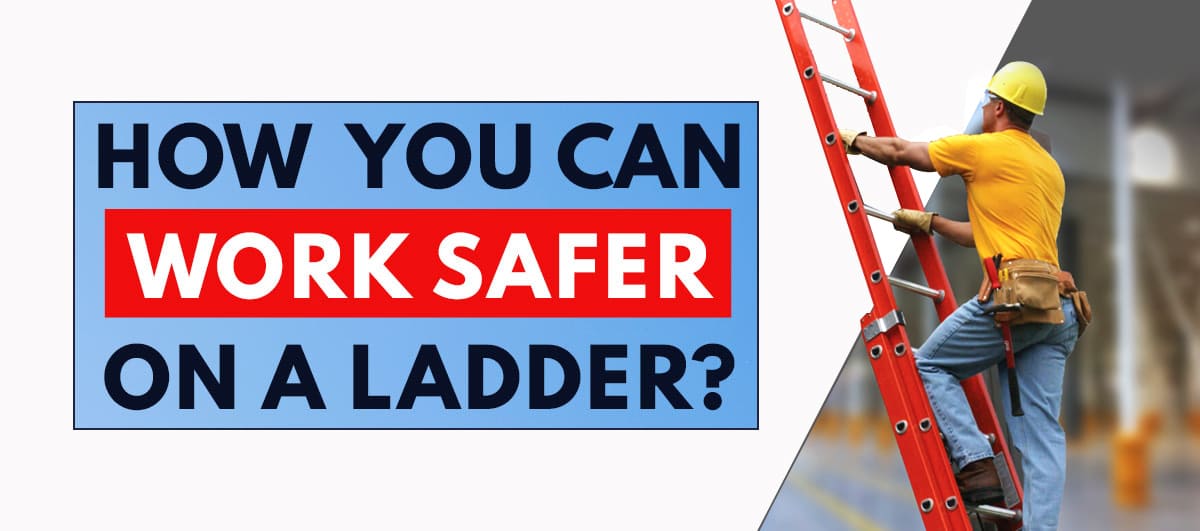
How You Can Work Safer on a Ladder?
For most works,you use a ladder to reach the high locations to complete the task without other’s help. At some point, you may use the ladders incorrectly like the wrong position or using damaged ladders, etc…
Over the years, the Health and Safety administration/boards and ladder manufacturers have made a decision to improve education regarding ladder safety to help keep others safe from injuries or other mishaps.
So, to simplify the learning curve, we have mentioned some basics of ladder safety like,
- Having the right ladder for the job
- Maintaining three points of contact
- Not overreaching
- The 4:1 ratio
- Ladder leveling
- Ladder inspection
- Watching your step
1.Having the Right Ladder for the Job
You wouldn’t use a step stool to reach a roof, and you wouldn’t use an extension ladder to reach a standard doorframe, so why would you use the wrong ladder for any other task? It’s important to familiarize yourself with your ladder’s size and its use, so you can work safer and more efficiently.
If at any point during the project, you realize that you are using the wrong kind of ladder, stop use and find one that is the appropriate one to finish the task. Furthermore, if you find yourself reaching for something that isn’t a ladder when climbing like a chair, shelf or cabinet, stop and grab the proper ladder for your job
2.Maintaining Three Points of Contact
When you’re working at the top of a ladder, it is imperative to maintain three points of contact with the ladder. Typical points of contact include the hands, feet or knees (i.e.) you should have ensured that both feet firmly planted on the ladder, with a hand or your knees resting on the ladder for stability. When you lose your third point of contact, you are more likely to lose balance, which can result in some serious injuries.
3.Overreaching
This seemingly an innocuous action which leads to the most severe and catastrophic ladder-related injuries. It also directly correlates to the point above maintaining three points of contact. When you don’t maintain three points of contact, you are more likely to overreach, and when you overreach, your ladder loses balance.
If you want to climb into the bottom of the ladder, it is important to reset the ladder and climbing back up. While at the top of the ladder, a good rule of thumb is to keep your belt buckle between the rails and if your belt buckle is beyond the side rails, you have reached too far.
4.The 4:1 Ratio
If ladder leaned against the surface you must follow these steps to prevent the mishaps.
- Face your ladder
- Placing your toes against it
- Reach your arms to shoulder height
If your ladder is in the right position, you should be able to touch the rungs of your ladder without adjusting. If this isn’t your experience, adjust your ladder and try again.
5.Ladder Leveling
Have you ever climbed a ladder, just to find you felt a little off-centered? Not only is that a frustrating situation to work around, but it also is unsafe. If a ladder is uneven by just 1-inch at the base, it can cause a 9-inch lean at the top of a 19-foot ladder.
It is normal at a job site, to not work on level ground. It happens, especially if you are working outdoors. So, if your ladder is an incorrect level, rather than climbing unevenly or finding something to place under your ladder, we recommend using an integrated leg leveler that can stabilize and level the ladder for safe climbing.
6.Ladder inspection
Before using a ladder, you must have to inspect the condition of the ladder such as dents/cracks in the feet of ladder ensure safety, especially if it is used by many persons (i.e.) colleagues or others. If your ladder is damaged or questionable, do not use it.
7.Watching your step
Most of the ladder-related injuries/mishaps occur due to the missing of the final rung of the ladder. Before stepping-off, make surethat your ladder has all the steps without any missing andin addition, use a ladder with an integrated bottom rung alert which helps to increase your safety while you work.
Final Thoughts
If you follow these basic safety tips while using a ladder either in the workplace or other job sites, it will help you finish the task without any injuries or accidents, so you can return home safely at the end of the day.
Also Read: Top 7 Safety Tips For Working Safely at Height
For any Safety Training Courses, please contact our Green World Group – we deliver international standard Safety Courses such as Nebosh IGC, IOSH, HACCP Courses, etc… for individuals in classroom and online mode & for corporates and industries we provide In-House training sessions by highly-qualified tutors in Occupational Health and Safety Management.
